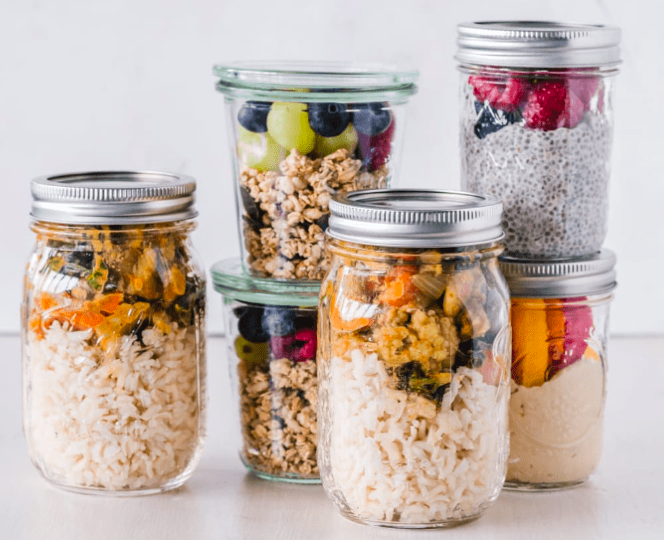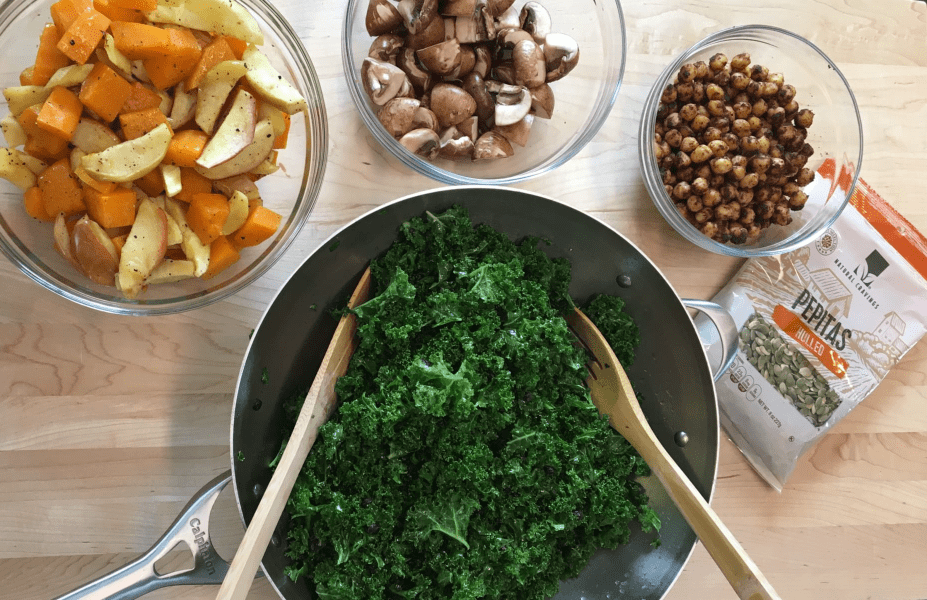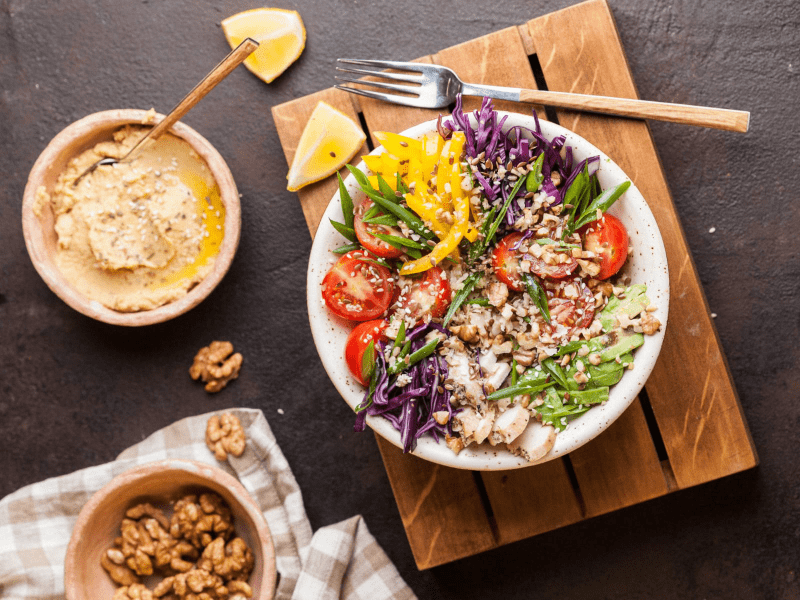Meal Planning: A Complete Guide


Table of Contents
What is meal planning and how can it help you achieve your goals?
“I used to think that meal planning meant eating the same meals for breakfast, lunch and dinner 7 days a week. I had images of dozens of identical tupperwares packed with boiled chicken and boiled vegetables. Yuck! “
As somebody who loves food and making creative recipes, I couldn’t imagine anything worse than eating the same food every day.
Enter batch cooking. It’s a type of meal planning that involves cooking up “batches” of your favourite foods one or two days a week and then using them to create different meals throughout the week. This can be as easy as chopping up some veggies and storing them in the fridge or cooking a pot of rice at the start of the week to eat with several meals.

How can batch cooking help you?
Batch cooking can make preparing healthy meal prep so much easier. Simply cook up a large portion of beans or grains and use in meals throughout the week. You can also roast or steam veggies in advance. Make versatile sauces that you can add to various dishes or prepare tempeh, tofu or other vegetable protein in advance.

What are the benefits of meal planning and meal prep?
- As most of your prep is done in advance, you spend less time during the week planning and preparing your meals.
- Preparing things in batches means less washing up after meals.
- When you plan in advance it is easier to prepare delicious healthy meals – this can help you to reach your health goals, especially weight loss!
- Being organised in advance can stop impulse buys at the supermarket and can actually save you $$$.
- If you’re new to cooking, planning and preparing in advance can boost your confidence in the kitchen.
How can you get started?
- Find a day or two that work for you. Meal planning and prepping on Sunday can be really helpful as it gives you a head start on the week ahead.
- Check your cupboards to see what ingredients you already have. This might inspire some ideas for your week but will also help you avoid buying duplicated when shopping.
- How many meals should you cook? Cook for 2-3 days at a time – freeze the rest.
- Based on the ingredients you already have and the amount of time available to you – What do you feel like cooking?
- After you have some ideas you can search for recipes. Remember to choose recipes with ingredients in common so that you can batch cook them and save yourself time.
- Fill in your meal planner and make your grocery list.
- Get cooking!
- Don’t forget you can freeze your leftovers 🙂
Don’t forget you can download my free meal planning guide to help you plan out your meals for the week. It includes tips to help you meal plan, a weekly meal planner template, plant based grocery list and more.

Batch Cooking Ideas
Are you stuck for ideas? Maybe these suggestions will help 🙂
Veggies:
- Chop up veggies that you can add to curries, stir fries, pasta sauces or use in soups.
- You can also chop and roast some veggies in advance as a nice addition to quick midweek lunches.
- Chopped cucumber and carrots make great snacks (store in a jar with water in the fridge to keep them crisp) – I like mine with hummus!

Fruits:
- When I bring home some berries I like to wash them straight away and put them in a bowl in the fridge. This way when I’m looking for a snack they’re ready to eat. You can do this with any fruit.
- You can also buy ripe bananas, chop them and freeze them to use in smoothies. The same goes for any other ripe fruit you have lying around. If you know you won’t have time to eat all the fruit in your house – chop and freeze for smoothies and smoothie bowls.
- You can also chop lemons and leave in the fridge to add to your water in the morning.

Bread, potatoes, rice, pasta, noodles + low carb options:
- Whatever your carb of choice is you can prepare a batch to use with meals for a couple of days. There are lots of different ways you can reuse potatoes, pasta and rice. *Be careful reusing rice, ensure it’s been refrigerated asap after cooking.
- I love to bake my own homemade brown bread. If I’m not going to eat it all I slice it and freeze the remainder to use for toast.
- Opt for wholegrain choices for a fibre boost and if you’re looking to reduce your carb intake a bit you can make a batch of cauliflower rice, courgetti or other veggie alternatives to add to your midweek meals.

Salad:
- Mix a nice salad in a big serving bowl. It will keep in the fridge for several days. Keep your dressing separately – the leaves will go soggy if you dress it in advance.
- Think outside of the box, salads go way beyond just lettuce. Beans, lentils, nuts, seeds and lightly cooked veg are all delicious in salads. Enjoy a mix of these ingredients for a nutritious high fibre, high protein option.

Remember meal planning doesn’t have to be complicated or boring. I hope these tips will be help you to meal plan effectively and have more fun in the kitchen. Remember to download my meal planning PDF complete with free templates to help keep you on track.
If you found this blog helpful, please consider pinning it to Pinterest 🙂

If you liked this blog, you’ll also enjoy my blog about Plant Based Protein Sources. It’s been my most popular blog post to date. You can check it out here or get a sneak peak with the graphic below.

Cathy
November 11, 2019 at 3:43 pmI can’t download the free plant based menu planner…please help 🙂
hello@rozfraser.com
November 21, 2019 at 5:58 amHello Cathy, I’m so sorry about that. I just sent it to you via email 🙂
Cathy
November 21, 2019 at 7:46 amThan you 🙂